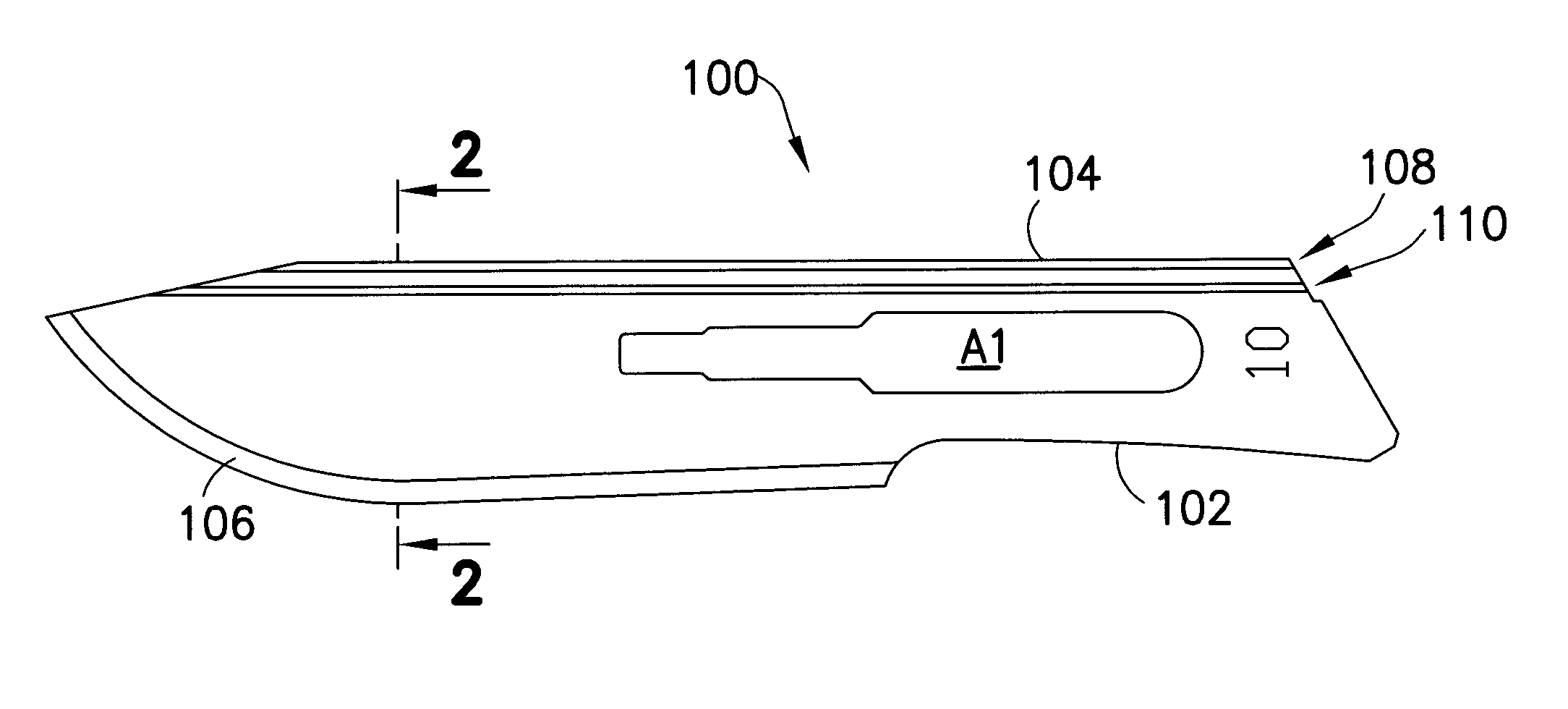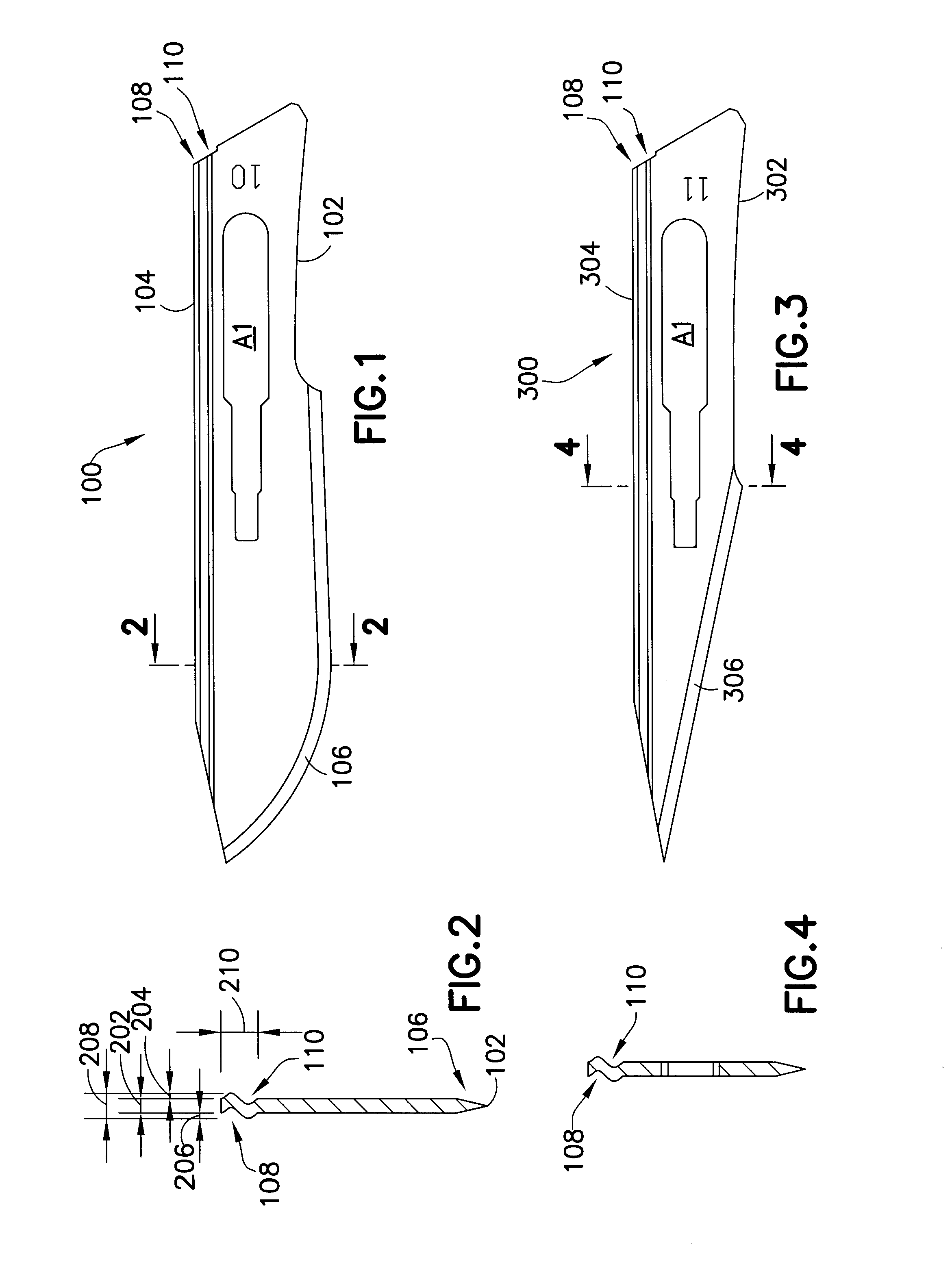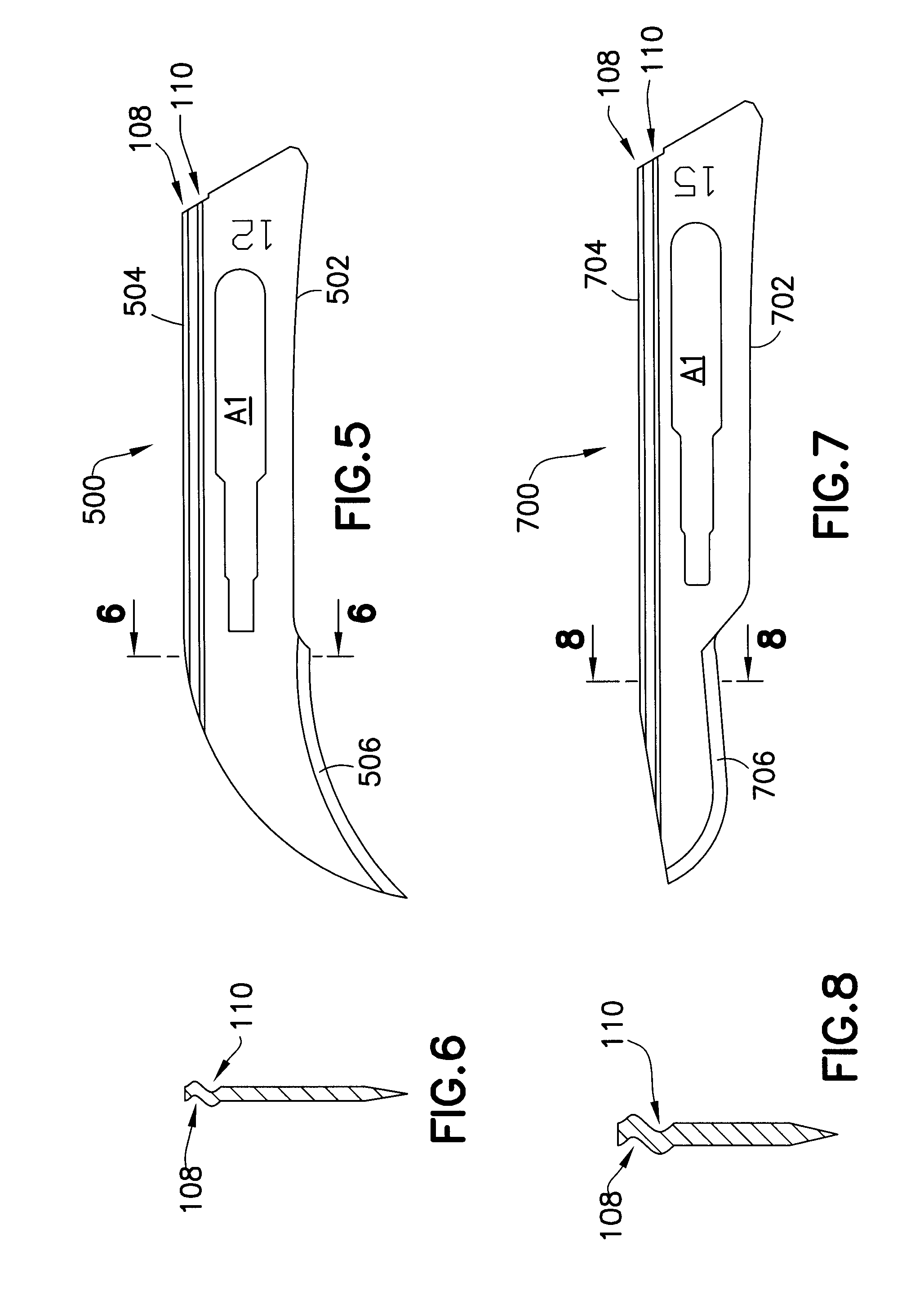Scalpel blade having dual indentations on back edge
a blade and back edge technology, applied in the field of blades, can solve the problems of brittle blades, severe hazards, and inability to adapt to the shape of blades,
- Summary
- Abstract
- Description
- Claims
- Application Information
AI Technical Summary
Problems solved by technology
Method used
Image
Examples
first embodiment
[0049]FIG. 1 is a profile view of the present invention, specifically, a number 10 scalpel blade. FIG. 2 is a cross-sectional view of the scalpel blade shown in FIG. 1.
[0050]As shown in FIG. 1, scalpel blade 100 preferably comprises first edge 102, second edge 104, cutting edge 106 located along a portion of first edge 102, first indentation 108 and second indentation 110. Second edge 104 is commonly referred to in the art as the back edge.
second embodiment
[0051]FIG. 3 illustrates a profile view of the present invention, specifically, a number 11 scalpel blade. As shown in FIG. 3, scalpel blade 300 preferably comprises first edge 302, second edge 304, cutting edge 306 located along a portion of first edge 302, first indentation 108 and second indentation 110. FIG. 4 is a cross-sectional view of the scalpel blade shown in FIG. 3.
third embodiment
[0052]FIG. 5 illustrates a profile view of the present invention, specifically, a number 12 scalpel blade. As shown in FIG. 5, scalpel blade 500 preferably comprises first edge 502, second edge 504, cutting edge 506 located along a portion of first edge 502, first indentation 108 and second indentation 110. FIG. 6 is a cross-sectional view of the scalpel blade shown in FIG. 5.
PUM
 Login to View More
Login to View More Abstract
Description
Claims
Application Information
 Login to View More
Login to View More - R&D
- Intellectual Property
- Life Sciences
- Materials
- Tech Scout
- Unparalleled Data Quality
- Higher Quality Content
- 60% Fewer Hallucinations
Browse by: Latest US Patents, China's latest patents, Technical Efficacy Thesaurus, Application Domain, Technology Topic, Popular Technical Reports.
© 2025 PatSnap. All rights reserved.Legal|Privacy policy|Modern Slavery Act Transparency Statement|Sitemap|About US| Contact US: help@patsnap.com



